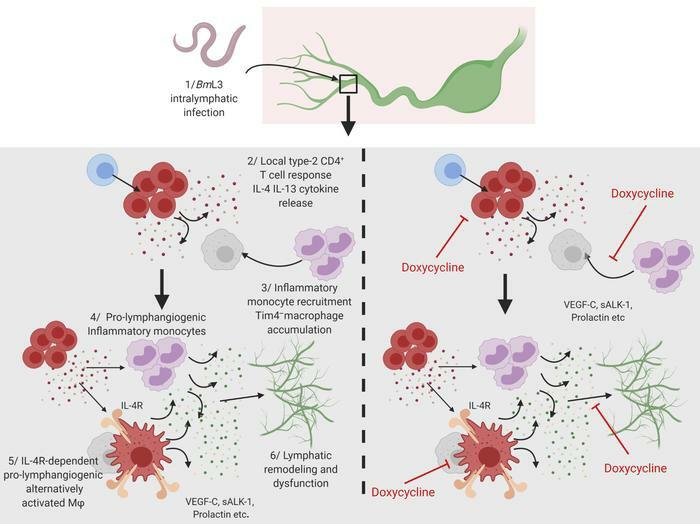
The research was published this week in The Journal of Clinical Investigation. Senior author on the study, LSTM's Dr Joseph Turner, explained: “Our experimental research determines that a type-2 immune response recruits specialised cells from the blood, called inflammatory monocytes, to parasitised lymphatics early during infection. These cells differentiate into macrophages, that are activated to stimulate persistent lymphatic remodelling, leading to impaired lymphatic drainage”.
The research highlights that lymphatic pathology can be therapeutically targeted by tetracycline antibiotics, which modify the inflammatory disease process at multiple points. Dr Turner continued, “doxycycline has been proven to reverse filarial lymphoedema clinically in proof-of-concept trials and is currently being evaluated in larger studies. Now that we have unravelled a disease pathway targeted by doxycycline that is independent of the drug’s antibiotic properties, we plan to utilise our tractable experimental model to identify more effective and selective therapeutics for this major cause of global disability”.
Tetracyclines improve experimental lymphatic filariasis pathology by disrupting interleukin-4 receptor–mediated lymphangiogenesis
Julio Furlong-Silva, … , Mark J. Taylor, Joseph D. Turner
J Clin Invest. 2021;131(5):e140853. https://doi.org/10.1172/JCI140853.